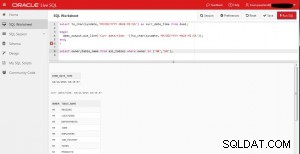Você sempre pode criar um script de shell que faça exatamente isso :-)
#!/bin/sh
mysql -BN test > /tmp/$$_tagnames.tmp <<SQL
select distinct tagname from test;
SQL
cat > /tmp/$$_create_table.sql <<EOF
drop table if exists pivot;
create table pivot select
EOF
while read tag; do
echo "max(if(tagname = '$tag', value, null)) AS '$tag'," >> /tmp/$$_create_table.sql
done < /tmp/$$_tagnames.tmp
cat >> /tmp/$$_create_table.sql <<EOF
time
FROM test
GROUP BY time;
select * from pivot;
EOF
mysql -Bt test < /tmp/$$_create_table.sql
rm /tmp/$$_create_table.sql
rm /tmp/$$_tagnames.tmp
Dados:
mysql> select * from test;
+---------+-------+---------------------+
| tagname | value | time |
+---------+-------+---------------------+
| a | foo | 2012-12-21 00:00:01 |
| b | foo | 2012-04-27 00:00:01 |
| c | bar | 2012-03-27 00:00:01 |
| d | bar | 2012-12-21 00:00:01 |
+---------+-------+---------------------+
4 rows in set (0.00 sec)
Saída do script:
$ ./pivot.sh
+------+------+------+------+---------------------+
| a | b | c | d | time |
+------+------+------+------+---------------------+
| NULL | NULL | bar | NULL | 2012-03-27 00:00:01 |
| NULL | foo | NULL | NULL | 2012-04-27 00:00:01 |
| foo | NULL | NULL | bar | 2012-12-21 00:00:01 |
+------+------+------+------+---------------------+




